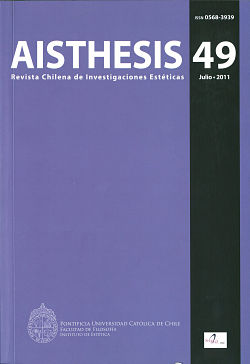The importance of viewing in artistic behaviour: historical identity and visual perception
Main Article Content
Abstract
Clearly, nowadays, the visualization of images has a special meaning, as well as the way in which, voluntarily, it might or might not produce an impact in our retina. This supposes that the observer has a criteria for interpretation that is usually absent. The aim of this paper is to share reading patterns that, even though have emerged from an analysis of tradition, provide references to think about contemporary art, specially from two points of view: the fi rst, the way we understand pictorial representations, and secondly, the attitude an artist holds towards it. We will approach the visual perception concept through a historical journey from the XIX century to our present. The analysis will review texts about the work of Manet, Braque, de Chirico, Music, de Kooning, Hockney and Richter. Our study portrays how perception has given place to characteristics that do not only belong to a particular way of behavior, but also to a peculiar form of acting by the artist which produce in the observer a different attitude in terms of the space-time references.
Downloads
Article Details

This work is licensed under a Creative Commons Attribution-NonCommercial-ShareAlike 4.0 International License.
All contents of this electronic edition are distributed under the Creative Commons license of "Attribución-shareAlike 4.0 Internacional" (CC-BY-SA). Any total or partial reproduction of the material must mention its origin.
The rights of academic works published in this publication belong to their authors., who grant to AISTHESIS: Revista Chilena de Investigaciones Estéticas the license for its use. The management of the permits and the authorization of the publication of the images (or of any material) that contains copyright and its consequent rights of reproduction in this publication is the sole responsibility of the authors of the articles
